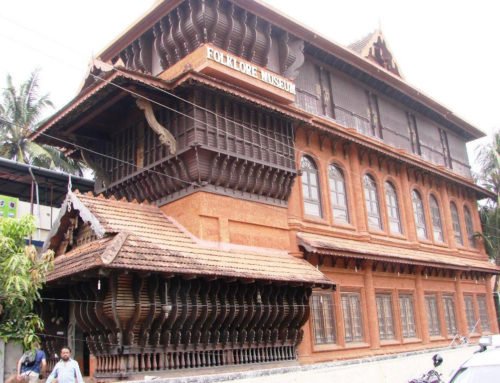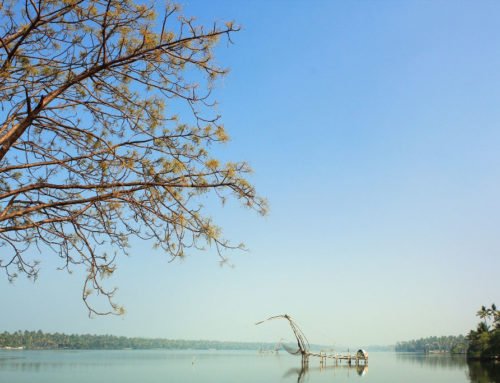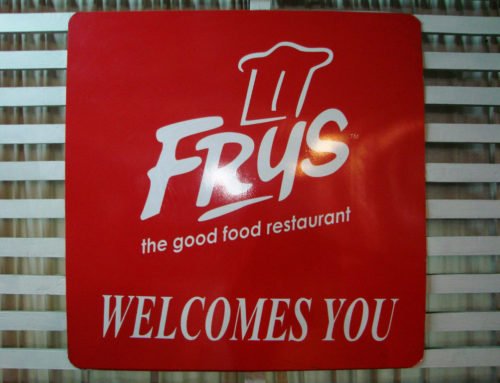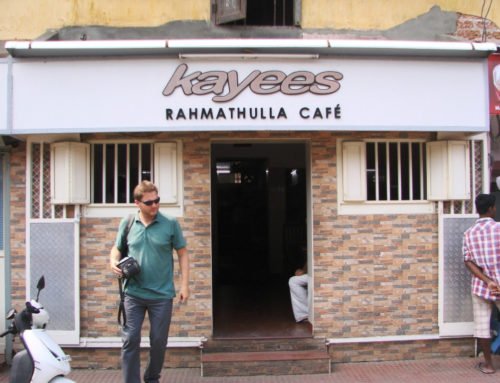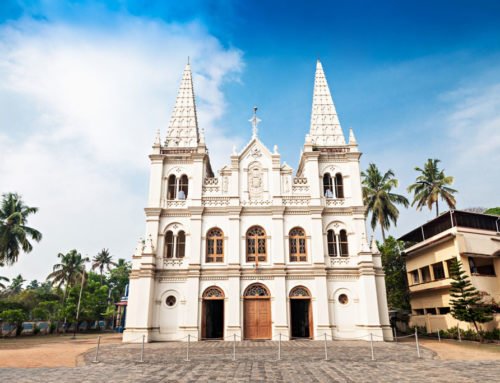Overview
- Features: Tour of backwaters of Kerala in a house boat & country boat
- Opening Times: 8:00 am to 5:30 pm, daily
- Best Time to Visit: Late October to early March
- Duration: Full day
- Travelled By: House boat, country boat
- Cost: Rs 850
- Address: Pick up & drop off at Fort Kochi/Ernakulum, Kerala, India
- Type: Activity, Natural wonder
Author Reviews[display_rating_item_results rating_form_id=”2″ rating_entry_ids=”1″ show_category_filter=”false” show_options=”true” result_type=”star_rating” preserve_max_rating=”true” show_title=”false” show_count=”false” ]
Total Rating: [display_rating_result rating_form_id=”2″ show_count=”false” show_rich_snippets=true] [accordions load=”1″] [accordion title=”User Reviews” last] [display_rating_item_results rating_form_id=”5″ show_options=”true” result_type=”star_rating” preserve_max_rating=”true” show_title=”false” show_count=”true” show_rich_snippets=true] [/accordion] [accordion title=”Add Review”][display_rating_form show_email_input=”true” show_comment_textarea=”true” show_name_input=”true” rating_form_id=”5″] [/accordion] [/accordions]
Summary
A cruise along the backwaters is one of the most enchanting experiences that Kerala offers. Exploring this labyrinthine network of waterways, which weave through villages set amidst lush vegetation, offers glimpses of Kerala’s unique rural lifestyle, where land and water are inseparable. Water Valley Tour with KTDC is a great Kerala backwaters tour from Kochi.
Kerala Backwaters Tour from Kochi
A cruise along the backwaters is one of the most enchanting experiences that Kerala offers. Exploring this labyrinthine network of waterways, which weave through villages set amidst lush vegetation, offers glimpses of Kerala’s unique rural lifestyle, where land and water are inseparable.
According to legend, Parasurama, the sixth incarnation of Vishnu, created Kerala by throwing his battle axe into the sea. The abundance of canals, lagoons and lakes in the state seem to reinforce this legend of a land born from the sea.
[singlepic id=1181 w=720 h=560 float=center]
While the most popular backwaters tour is from Kollam (Quilon), situated between Ashtamudi Lake and the Arabian Sea, to Alappuzha (Alleppey) on the edge of Vembanad Lake, Kochi also has its own share of backwater tours as well. While the choice of transport ranges from local ferries and speedboats to kettuvallams (rice barges), the Kerala backwaters tour from Kochi is conducted in kettuvallams which is the best way to explore the Keralan backwaters.
There are several private backwater tours that run from Kochi, however we decided to go with the KTDC government-run Kerala backwaters tour (Water Valley Tour) for the day as we had read good reviews about them.
Tickets can be purchased up to a day in advance from their ticket office located besides the restaurants near the Chinese fishing nets in Fort Kochi. They also provide half-day backwater tours but we recommend to go for the full day tour to truly enjoy the backwaters experience.
[singlepic id=1183 w=720 h=560 float=center]
We were picked up from our hotel at 8:00 am in the morning and along with about eight others we drove about 30 to 45 minutes to a nearby village on the way to Alappuzha. From here, we boarded a house boat which was quite luxurious inside with comfortable seats from where we could watch the Keralan backwaters float by.
[singlepic id=1173 w=720 h=560 float=center]
We noticed a lot of water hyacinths on the water as we sailed past. While they are aesthetically beautiful, they are the cause of a serious ecological problem since its untamed growth has allowed it to clog the waterways of Kuttanad, the rice bowl of Kerala.
Kerala’s backwaters have a unique ecosystem – freshwater from the rivers meets the seawater from the Arabian Sea. They were formed by the action of waves and shore currents creating low barrier islands across the mouths of the many rivers flowing down from the Western Ghats range.
[singlepic id=1184 w=720 h=560 float=center]
For about four hours we cruised through wide canals and lagoons where we got to see several fishermen catching mussels as well as several Chinese fishing nets set up in the middle of the lagoons.
[singlepic id=1187 w=720 h=560 float=center]
[singlepic id=1178 w=720 h=560 float=center]
We stopped at an abandoned village which in the days gone by used to manufacture chunam from shells. Requiring a lot of manual labour it was unsustainable and went broke.
As we wandered around the island under coconut palm trees, we were introduced to several spice plants including tumeric, ginger and neem.
[singlepic id=1177 w=720 h=560 float=center]
[singlepic id=1175 w=720 h=560 float=center]
Here we were introduced to a traditional pastime – toddy tapping. Toddy tappers are expert at scaling coconut palms. The local brew is made from fermented coconut palm sap and is sold in shacks along the waterways. The first brew is light and delicious – however, potency levels rise with subsequent fermentation.
There were a couple of toddy tappers on the island and we were allowed to buy a glass of toddy from them. Graham was brave enough to taste it and lived to tell the tale. It tastes quite like coconut milk, just a bit sweeter and more potent.
[singlepic id=1176 w=720 h=560 float=center]
[singlepic id=1180 w=720 h=560 float=center]
Back on the house boat, we were given a locally prepared variation of mussels in spices and wrapped in banana leaf. The freshwater mussels in Kerala are smaller than their saltwater counterparts; we are unsure if it is due to over fishing or the lack of suitable growing conditions. The mussels were coated in several different spices along with pieces of coconut. While I found the spices to be quite overpowering, Graham really enjoyed it.
[singlepic id=1174 w=720 h=560 float=center]
While we were enjoying our snack of mussels, we were slowly retracing our steps back to the start of our house boat trip. When we docked, we got off the boat to stretch our legs while lunch was being set up on the house boat.
Lunch was a traditional Keralan vegetarian fare consisting of rice, sambar, vegetables and a dessert of rice pudding.
[singlepic id=1186 w=720 h=560 float=center]
After lunch, we boarded a different boat, a country boat, which took us into the narrow canals and waterways of different villages. This was the best part of the tour as we got to encounter life along the waterways and understand how the backwaters are such an integral part of the life of the people in this region.
Unfortunately, the ground and water levels are often equal which makes flooding a problem during the monsoon. Fortunately for the people of this region, the government evacuates them and takes them to higher ground with temporary accommodation.
[singlepic id=1189 w=720 h=560 float=center]
[singlepic id=1172 w=720 h=560 float=center]
Since it was afternoon, we floated along the narrow canals watching women wash their dishes from lunch, chat with their neighbours across the canal or simply sit outside their house and watch life go by. In addition, we got to see a lot of ducks swimming along, a dead rat and a dead snake (perhaps a duel between the two resulted in their demise) as well as some local birds – cormorants, kingfishers and bee-eaters.
[singlepic id=1179 w=720 h=560 float=center]
This wonderful journey lasted for about three hours after which we were transported back to our starting point. Here we were given tea and biscuits before we were driven back to our hotels in Fort Kochi.
We loved this Kerala backwaters tour (Water Valley Tour) and rate it as one of the best things we did in South India. This tour should be on everyone’s itinerary, especially if you’re not going to Kollam or Alappuzha. Given that other private tours charge double the price we paid for this tour (Rs 850 pp), the value of this tour is remarkable. Not to mention the quality of the knowledgeable and friendly guide who spoke perfect English and explained the history of the backwaters, spices, toddy tapping and answered all our questions. The food was pretty good too.



